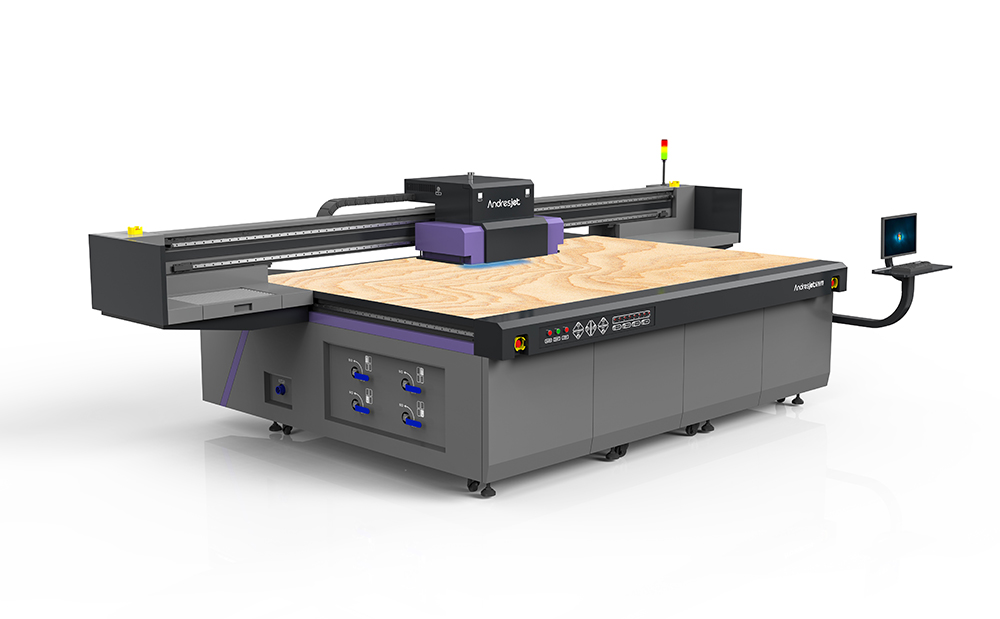How to Ensure Consistent Registration in UV Flatbed Printing?
How to Ensure Consistent Registration in UV Flatbed Printing?
In the world of UV flatbed printing, achieving consistent registration is crucial for producing high-quality prints. Registration refers to the precise alignment of the various color layers in a printed image, ensuring that each color is printed in the correct position relative to the others. When registration is off, the resulting print can appear blurry, distorted, or misaligned, significantly reducing its visual appeal and professionalism.

To ensure consistent registration in UV flatbed printing, several key factors must be considered and carefully managed. In this article, we will explore these factors and provide practical tips for maintaining excellent registration throughout the printing process.
1. Equipment Maintenance and Calibration
The first step to ensuring consistent registration is to regularly maintain and calibrate your printing equipment. UV flatbed printers are precision machines, and like any mechanical device, they require periodic servicing and adjustments to perform optimally.
Calibration: Regularly calibrate your printer’s printheads, sensors, and other critical components. This ensures that the printer is accurately reading and placing ink where it should.
Maintenance: Follow the manufacturer’s recommended maintenance schedule for cleaning and servicing the printer. Clogged printheads or misaligned sensors can lead to registration issues.
2. Media Handling and Preparation
The media you print on plays a vital role in registration. Different materials have varying absorption rates and surface textures, which can affect how the ink is laid down.
Media Selection: Choose media that is compatible with your printer and ink system. Using unsupported media can lead to ink spreading or bleeding, causing registration problems.
Media Preparation: Ensure that the media is properly loaded and tensioned on the printer’s flatbed. Loose or wrinkled media can cause the printer to misalign its inkjet nozzles.
3. Ink Management
UV-curable inks are specially formulated for flatbed printing, but they still require careful management to ensure optimal performance.
Ink Quality: Use high-quality, manufacturer-approved inks to reduce the risk of clogged printheads or ink spread.
Ink Temperature and Humidity: Maintain the recommended temperature and humidity levels in your printing environment. Extreme conditions can affect the viscosity of the ink, leading to registration issues.
4. Print File Preparation
The quality of your print file can significantly impact registration. A poorly prepared file may lead to alignment problems during printing.
Resolution: Ensure that your print files are high-resolution (typically 300 dpi or higher) for best results.
Color Profiles: Use the correct color profiles and convert your files to the appropriate color space (e.g., CMYK or RGB) depending on your printer’s requirements.
Preflight Checks: Perform preflight checks on your print files to identify and fix any potential issues before printing.
5. Software Settings
Modern UV flatbed printers come with advanced software that allows for precise control over the printing process.
Print Profiles: Create or select the appropriate print profile for your specific media and ink combination.
Registration Settings: Adjust the printer’s registration settings to ensure accurate alignment of the different color layers.
Software Updates: Keep your printer’s software up to date to benefit from the latest bug fixes and performance improvements.
6. Operator Training
Even with the best equipment and materials, operator error can still cause registration issues.
Training: Provide regular training to your operators on the best practices for loading media, preparing print files, and adjusting printer settings.
Standard Operating Procedures: Establish SOPs for common printing tasks and ensure that all operators follow them strictly.
7. Quality Control Checks
Regular quality control checks are essential to maintain consistent registration.
Test Prints: Perform test prints regularly to check for registration issues and make adjustments accordingly.
Inspection: Inspect finished prints for any misalignment or other quality issues before they are shipped out.
Conclusion
Ensuring consistent registration in UV flatbed printing requires attention to detail and a systematic approach. By regularly maintaining your equipment, selecting the right media and inks, preparing high-quality print files, adjusting software settings, training your operators, and performing quality control checks, you can significantly reduce registration issues and produce consistently high-quality prints.
Remember, every printing environment is unique, so it’s essential to establish standard operating procedures tailored to your specific setup. With careful attention to these factors, you can ensure that your UV flatbed printer produces beautifully aligned, professional-looking prints every time.
